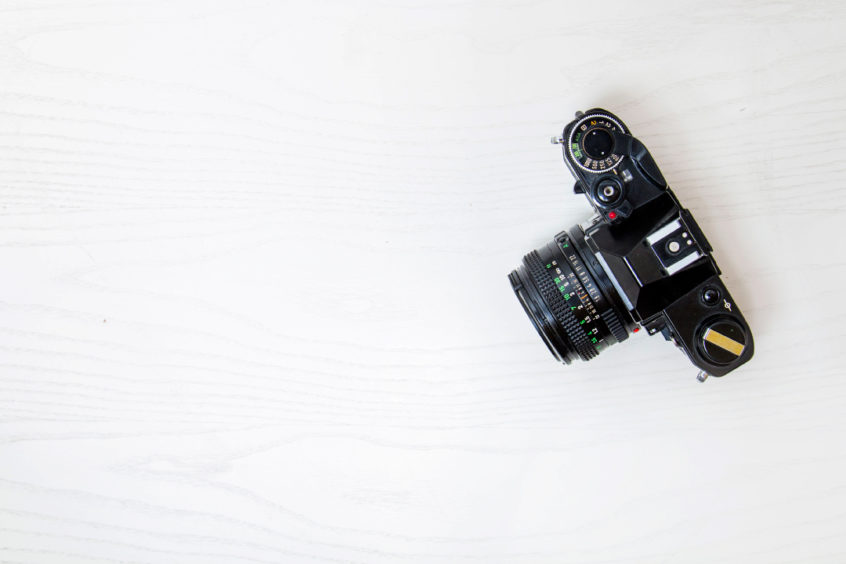Sure, nearly everyone and their mother these days is walking around with a picture-taking device known as a cell phone, but those tiny lenses have their limitations. Sometimes you need a good, old-fashioned camera to get the job done right. Except camera shopping isn’t what it used to be. There’s nothing old-fashioned about cameras anymore. That once-simple machine has gone super high-tech, with selections that include enough acronyms to brew alphabet soup for eons.
Fortunately, we here at The Main Event know a little something about photography. We asked one of our leading pro photographers, John Chan, to offer some tips for sorting through the overabundance of options.

There are three levels of cameras these days, Chan explains: consumer level, prosumer level and professional. “The consumer level is for the average everyday person, for fun or for home use,” he says. “The pro level is for professional jobs—people who are making money off of their photography. Both segments use prosumer cameras.”
The difference between the three is in the pricing and complexity. Regular folks who upgrade to prosumer tend to be interested in the high-end aspects of a good camera, he says. The professionals who opt for prosumer cameras are generally seeking a lower price tag for their equipment.
 In the consumer category, which is the most affordable, you’ll find compact or point-and-shoot cameras and also entry-level DSLRs. DSLR stands for digital single-lens reflex camera, which uses a digital imaging sensor instead of traditional film to capture images. (For the record, the cameras you remember from your youth were generally called single-lens reflex.)
In the consumer category, which is the most affordable, you’ll find compact or point-and-shoot cameras and also entry-level DSLRs. DSLR stands for digital single-lens reflex camera, which uses a digital imaging sensor instead of traditional film to capture images. (For the record, the cameras you remember from your youth were generally called single-lens reflex.)
Chan admits that his cell phone takes better pictures than a typical point-and-shoot, but you still might want to consider a compact camera if you’re looking for portability (they can fit in your pocket) and also durability. Compact cameras are well suited for outings where you don’t want to carry extra weight or bulk, or if there’s a chance the camera will fall. If you’re going to be in or near the water, you can buy a waterproof compact version at a reasonable price, he says.
If your family is into sports, Chan recommends a DSLR with a zoom lens. “You can zoom in and get a good action shot of your child,” he says. In fact, DSLRs can be adapted for many uses. A telephoto lens is the best option for nature photography. A wide-angle lens is well suited for landscapes and large group shots. If you’re the creative type and want to capture closeups of flowers or the morning dew on a leaf, you’ll want an attachable macro lens or built-in macro.
Like DSLRs, mirrorless cameras can accommodate a variety of lenses for different uses. (Both DLSRs and mirrorless cameras are known as interchangeable lens cameras, or ILCs.) Mirrorless cameras are another step away from the cameras of yore. They don’t have a viewfinder, nor do they capture an image using a mirror inside the camera body. As a result, they tend to be smaller than DSLRs. Instead of a mirror, they contain an interior sensor, which Chan says works especially well in low-light situations. “A full-size sensor receives more information,” he says. Larger sensors in any camera will give you a better picture quality, but be prepared to spend more for the privilege.

No need to worry any longer about photo resolution with digital cameras, Chan says. Every camera these days uses more than enough pixels to assure a sharp image.
His overall top picks for the average consumer? “I recommend an entry level Canon or Nikon,” he says. They’re easy to use and have plenty of features to share and print photos easily. He especially likes the Canon Rebel T5i and Nikon D3300.
Regardless of how high-tech you decide to go, it might be better to do your initial shopping in a store instead of online, he says. All the bells and whistles in the world won’t matter if the camera feels awkward in your grip. “I tell everyone to hold it in their hands and see what feels comfortable for them,” he says.
To look at John Chan’s Portfolio and read about how pro-photography can be a great addition to your event click here


